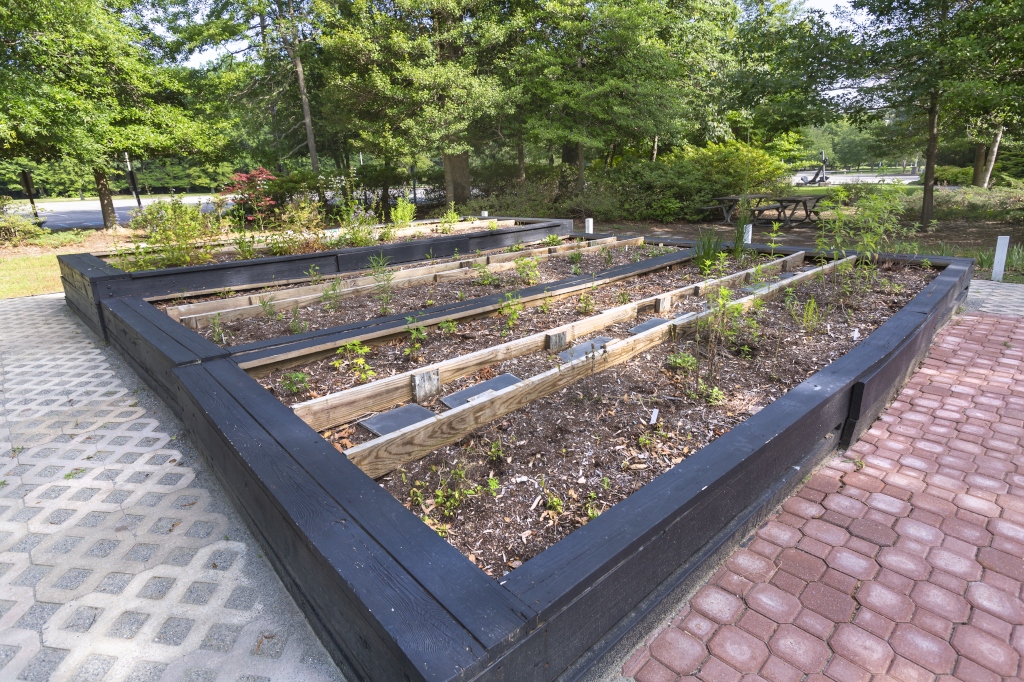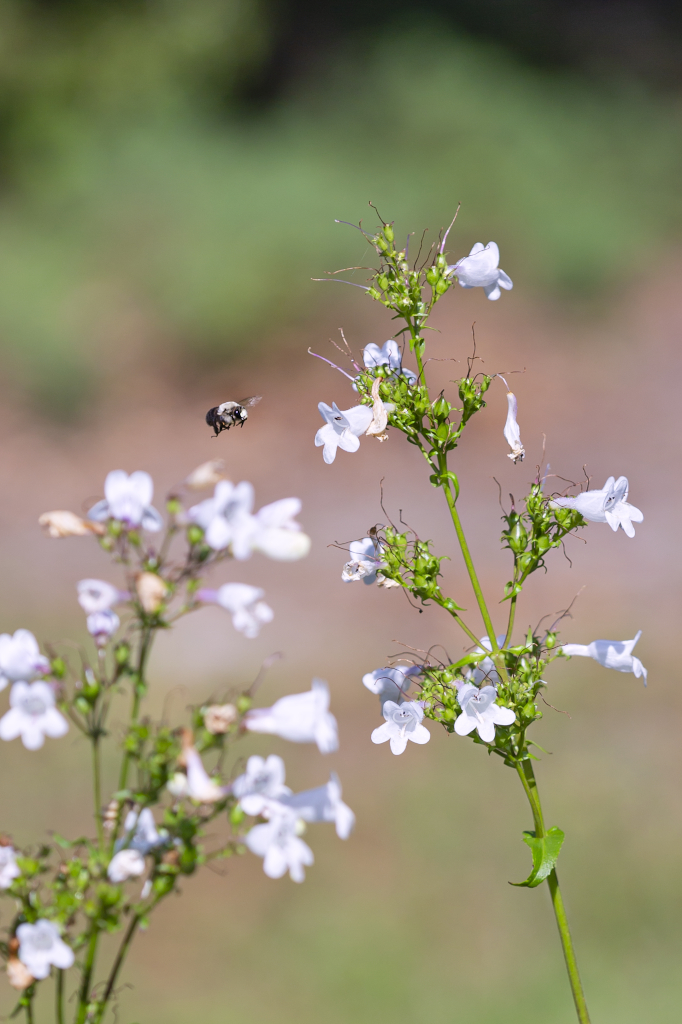Today’s post is in honor and celebration of Pollinator Week!
Warning: This post is full of cute bee butts!
In my last post, I explained some details of our fantastic pollinator garden at The Mariners’ Museum and Park, and how our local community and Museum staff helped to build, plant, and maintain it. I touched a bit on some of the plants featured in the garden and some of the pollinators who might visit those plants. Here, the reader can learn a bit more about the pollinators we have record of in the Park and how those specific plants are assisting them in their warm-weather pollen feast.
Basics of pollination
First of all, let’s take a step back and talk about pollination. What is it? Pollination is simply moving pollen grains from one flower to another flower from the same species. This act of transferring pollen between flowers helps many of the world’s flowering plants to continue to bear fruit and reproduce year after year. It’s estimated that 78% to 94% of the world’s flowering plants need a little help from animal friends— pollinators that is!
Pollinators can be either biotic (living) or abiotic (nonliving). Common pollinators include bees, butterflies, moths, beetles, flies, (fruit-eating) bats, hummingbirds, small mammals, water, and the wind. Additionally, numerous flowering plants have also evolved and developed a special relationship with pollinators to make their flower traits are more appealing so those flowers get pollinated. Some plants might give off a certain smell, the flower might be a certain color or shape, and all of those factors influence who comes to the flower. These traits and characteristics on a flowering plant trying to attract specific pollinators are called Pollinator Syndromes.
As one can imagine, pollinators aren’t aware of this process, they are in it for the food! Each of the special pollinators is adapted to these special flowers, for example, the tongues of hummingbirds are much longer than bee tongues, so hummingbirds often prefer the flowers that are trumpet-shaped. Bees, however, have been shown to also bypass those trumpet-shaped flowers and chew through the bottom petals to get to the sweet nectar! (Bees also will chew on plant leaves to make the plants hurry up and produce flowers if they need some fast food in the spring.) Clever adapting bees!
Bees in North America
In North America alone, we have 4,000 unique bee species and nearly 22,000 species worldwide! From the data we’ve collected over the past few years in the Park, especially from iNaturalist, visitors have spotted the common eastern bumblebee, eastern carpenter bee, and southeast blueberry bee.
I’ve personally seen other native bees including various types of sweat bees and mason bees. We also see Honeybees in the Park, but since that species is originally from Europe, it’s not part of the 4,000 North American native species. There are many, many more bee species in this area, so if you’re on iNaturalist in the Park, please take a picture of other bees (and pollinators in general) to help expand our database!
Pollinators in the Park
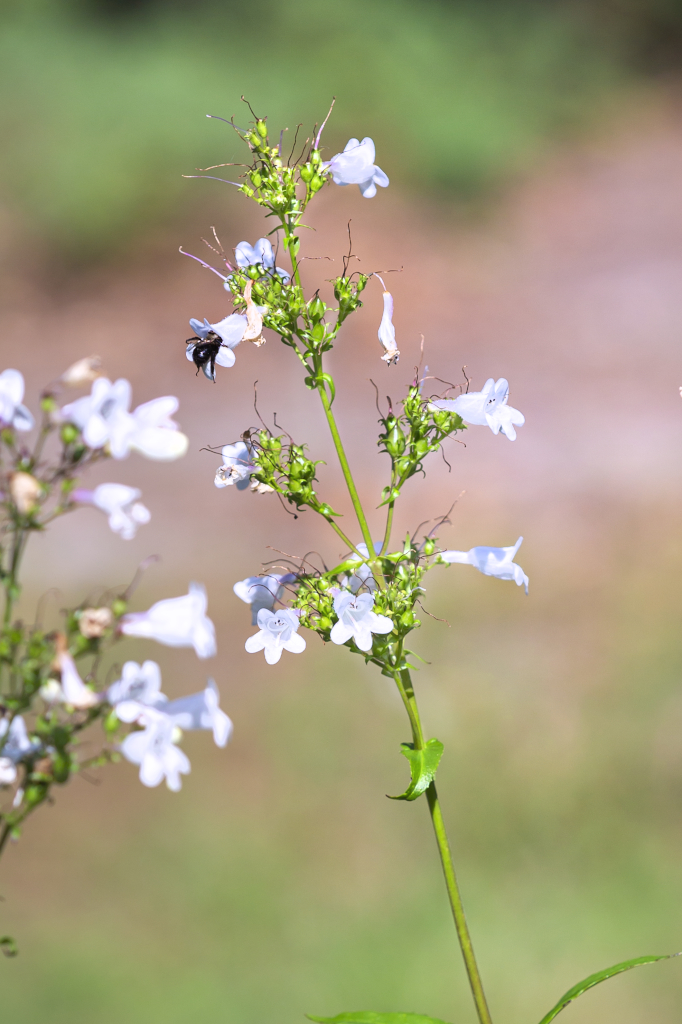
As listed previously, pollinators can also be butterflies, moths, beetles, flies, bats, and hummingbirds. Some pollinators recorded from our iNaturalist citizen-science database include: ruby-throated hummingbird, eastern tiger swallowtail, pearl crescent butterfly, isabella tiger moth, horned passalus beetle, henry’s elfin (butterfly), and so many more! (Visit our page for more information. You can also visit our eBird page as well to see the birds who fly through and might eat some of those pollinators for their dinner.)
Plant planning (larval hostplants)
When we were planning the plants in the pollinator garden, I wanted a few important elements to be upheld during this process of garden planning. The plants needed to be native to Virginia, there would be no harmful and unnecessary chemical pesticides/herbicides applied, and I wanted as many plants as possible to not only be great pollinator sources, but also larval host plants for caterpillars of native moths and butterflies.
A great example of a host plant relationship most people know about is between milkweed and the monarch butterfly. The eggs of the monarch are laid on the milkweed. As caterpillars, they eat the milkweed leaves, which for the monarch caterpillars, in turn, makes them poisonous to predators. The distinctive caterpillar body coloration (black, yellow, and white stripes) on the caterpillar tell predators they are not tasty! When the caterpillar eventually transforms into an adult butterfly, the milkweed also becomes a great source of food that the butterflies can feed on during their magnificent multi-generational journey from Canada to Mexico and back. (Visit Monarch Watch for more information on monarchs and their amazing journey!)

Larval host plants are important to all moths, butterflies, and skippers– it is literally their home and meal during their larval stage of life. Some species might have many plants they call home, and others only have one type. The monarchs mentioned above only use milkweed, while other butterflies might be able to use a few different plants. Henry’s elfin butterfly, one that is in the Park mentioned previously, has a few different larval host plants including hackberries, blueberries, and eastern redbuds to name a few.
Though in this round of planting selection we were not able to get all the larval host plants I dreamed of (I can dream, can’t I?), we were successful in the end to get quite a few. According to Piedmont Environmental Council, we have seven larval host plants. Listed below are the plants and the butterflies they are host to:
- Purple coneflower: silvery checkerspot
- Beardtongues: common buckeye
- Turtlehead: Baltimore checkerspot
- Asters: pearl crescent and silvery checkerspot
- Spiderworts: common buckeye
- Joe-pye weed: painted lady
- Columbine: spring azur
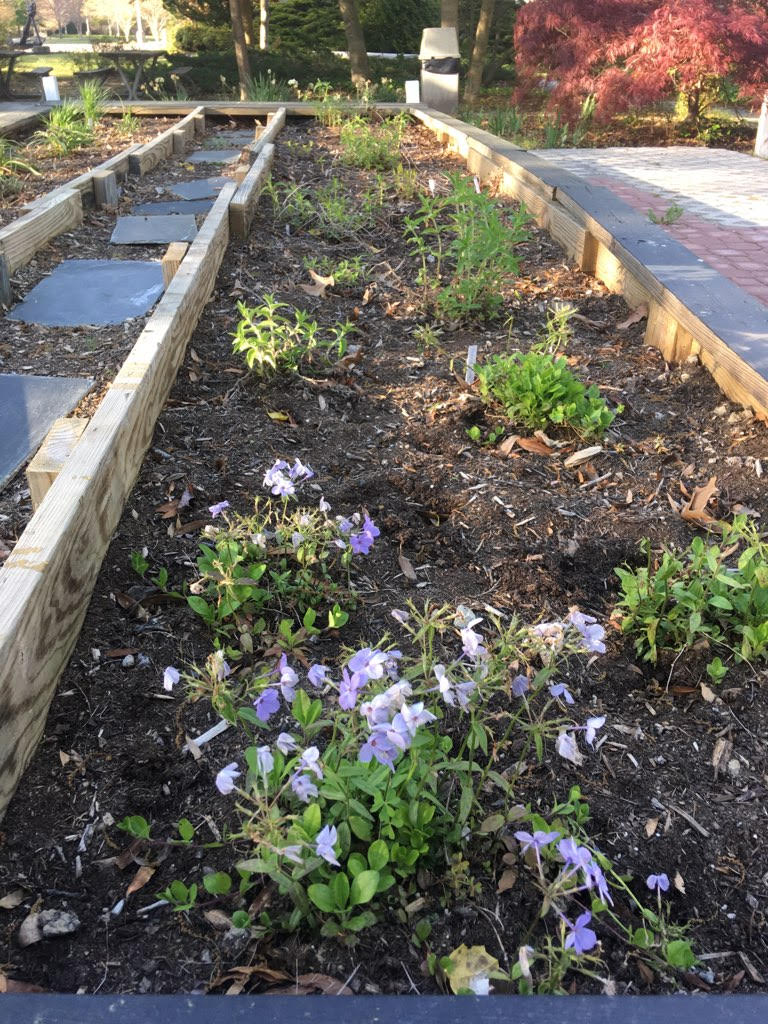
If you look at the list referenced above, we don’t have plants in here that are larval hosts for moths, however, with our diverse plant life in the Park, we actually have so many of the plant species listed on Piedmont Environmental Council‘s chart. We’re doing okay!
Curated for Phenology
The plant choice was additionally curated in part to consider phenology, or the bloom time of plants throughout the year. We wanted to create appeal and interest to our pollinators, which means making sure your plants don’t all bloom at the same time.
The red columbine (Aquilegia canadensis) is a wonderful spring-bloomer. It’s also shade-loving, so it was a good fit for the slightly shader areas of the garden. The creeping phlox was an earlier bloomer in the spring (see image above). Based on the images Amanda Sheilds snapped recently, the calico beardtongue (Penstemon calycosus) is full of lovely flowers now! The bees seem to love it! Later in the season (summer, end of summer, and fall) other plants will get their chance to shine, like the sweet joe-pye weed (Eutrochium purpureum), sweet goldenrod (Solidago odora), and the purple cone flower (Echinacea purpurea).
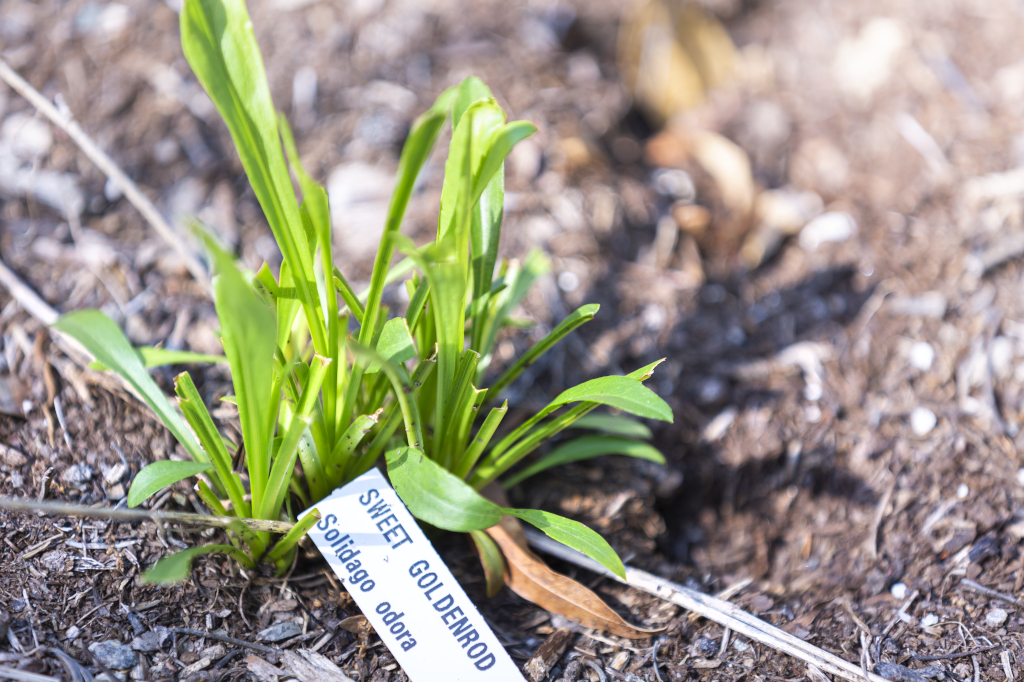
Why pollinators matter
To end our pollinator chat today, let’s talk about why pollinators matter. Many pollinators, like the bumblebee, are keystone species, which means they are a species that many other animals depend upon. When the keystone species are taken out of an ecosystem, it can throw the entire system out of whack. Imagine the ecosystems are like big clocks with lots of gears. If you take one critical gear out, the whole clock stops working.
A world without bees pollinating our flowering plants, like blueberries, strawberries, wheat, corn, zucchini, and so on, means we don’t have those foods. (Unless we physically pollinate them– but again, that’s another conversation or another day). According to Pollinator Partnership, pollinators provide us with one out of every three bites of food. Without our pollinators doing their job and helping plants, then our growing world population increasingly faces food security issues. Don’t forget that other animals rely on those foods for their survival, too, so it doesn’t just affect humans, but all animals who are relying on pollination to happen.
What you can do to help!
Our hardworking pollinators are struggling around the world in many ways due to the compounding issues of climate change, pesticides, disease, and other pressures, but you can help to make a difference.
You can build a little pollinator garden, or just plant native plants for the pollinators. Do some research on which plants are best for your green space. Ask around to make sure if the plants are native to the area– some places will only tell you what attracts pollinators, but leaves out if they are native plants or not.
Butterfly bush (Buddleia davidii) is invasive and aggressive. Don’t put it anywhere near your garden! It might attract pollinators, but it does little for our ecosystem, and there are many other alternatives out there that are better for this area (read this source to learn more).
Lastly, please, for the love of bees, do NOT use chemical pesticides or herbicides. The chemicals that are meant to kill mosquitoes, that are heavily used in the summer, actually kill all insects, including the vital ones like our pollinators. We need those insects– and other critters eat those insects. They are all part of our ecosystem, too.

